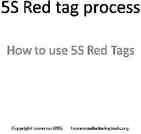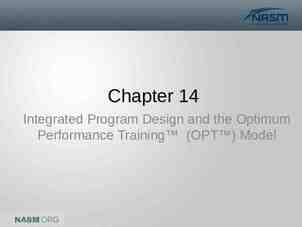CHAPTER 11 Game Theory 1 Lecture 6: Game Theory
32 Slides3.16 MB

CHAPTER 11 Game Theory 1 Lecture 6: Game Theory

Introduction to Game Theory The most important goal for this course 2 involves learning how to use economic models to think critically and carefully about managerial problems. To date, we have considered the following issues: What conditions characterize competitive outcomes and efficient allocation of resources? How does firm cost structure and the nature of the market determine prices and production? Lecture 6: Game Theory

Introduction to Game Theory Next, we apply strategic thinking 3 to decision-making and learning how to use it to analyze firm and individual choices; game theory is a method for studying strategic situations. After this short introduction to game theory, the remainder of the course will be devoted to learning about risk and its Lecture 6: Game Theory

Introduction to Game Theory Some Highly Recommended Game Theory Resources Book: “The Art of Strategy”, by 4 Avinash Dixit and Barry Nalebuff Online Course: Yale Professor Ben Polak’s “principles of game theory” video c ourse . Mind Your Decisions Blog – Lecture 6: Game Theory excellent source for real world

Introduction to Game Theory What's not a strategic situation? Perfect Competition – All firms are price takers; they don't have to worry about actions of competitors Monopoly – Since there is no competition, so there is no need to worry about actions of competitors. What is a strategic situation? Oligopoly – With a small number of firms, 5 your outcomes are affected not only by your own actions, but also by actions of Lecture 6: Game Theory your competitors.

Introduction to Game Theory Game theory is relevant and applicable whenever the consequence of a manager's decision depends on both the manager's own action and the actions of others There are no unconditional “optimal” strategies in game theory; the optimality of a strategy depends on the situation in which it is implemented. 6 Lecture 6: Game Theory

Strategy Basics All game theoretic models are defined by the following five parameters: 1. The players: A player is an entity that makes decisions; models describe the number and identities of players. 2. The feasible strategy set: Actions with a non-zero probability of occurring comprise the feasible strategy set. 7 Lecture 6: Game Theory

Strategy Basics All game theoretic models are defined by five parameters. (Continued) 3. 8 The outcomes or consequences: The feasible strategies of all players intersect to define an outcome matrix. 4. The payoffs: Every outcome has a defined payoff for every player. Players are assumed to be rational, that is, to prefer a higher payoff to Lecture 6: Game Theory a lower one.

Equilibrium In an equilibrium, no player has an incentive to unilaterally change his or her strategy; i.e., conditional on the choices of others, we are doing the best we can! Equilibria are rational, optimal, and stable. In what follows, we study various 9 Lecture 6: Game Theory ways for finding equilibria.

Dominant Strategies Strong Dominance: A strategy 10 whose payout in any outcome is higher relative to all other feasible strategies is strongly dominant. Weak Dominance: A strategy is weakly dominant if it does at least as well as any other strategy for some outcomes (i.e., it’s tied with another for Lecture 6: Game Theory

Dominant Strategies 11 Lecture 6: Game Theory

Iterative Dominance 12 Lecture 6: Game Theory

The Nash Equilibrium How can managers anticipate behavior in games in which a dominant strategy equilibrium does not exist? John Nash's answer to this question is the most widely used solution concept in game theory: the Nash equilibrium. Assuming that players are 13 rational, every player chooses the Lecture 6: Game Theory

New Product Introduction 14 Lecture 6: Game Theory

New Product Introduction – Nash Equilibrium 15 Lecture 6: Game Theory

Prisoners dilemma Clyde Bonnie 16 Don’t Confess Confess Lecture 6: Game Theory Don’t Confess Confess -5, -5 -30, -3 -3, -30 -20, -20

rational choice produces a bad outcome 17 Lecture 6: Game Theory

Real world examples of Prisoners Dilemmas Athlete A uses steroids, which gives him a competitive advantage. Other athletes are forced to use steroids to retain parity. As a result, no athlete is given a competitive advantage, but all are subjected to the hazards of steroids. A depositor hears that a bank is in trouble, and goes to pull out his savings. Others are forced to pull out their savings as a “run” begins on the bank’s savings, and the bank collapses. Mr. A pirates software/movies/music. So does Mr. B. So does Mr. C. As a consequence, the software/movies/music that would have been otherwise been produced for the benefit of Messrs. A, B, and C is not produced, due to a diminished market for software/movies/music. Lecture 6: Game Theory 18 The pollution which results from the collective

Class Problem 11.1 19 Lecture 6: Game Theory

Split or Steal On a UK game show called “ Golden Balls”, two contestants are each presented with two golden balls. One has “SPLIT” printed inside it and the other has “STEAL” printed inside it. If both contestants choose SPLIT, the jackpot is split equally between them. If one contestant chooses SPLIT and the other chooses STEAL, the stealer gets all the money. Lecture 6: Game Theory 20

Split or Steal Player 2 Steal Split S teal 0,0 100,0 Player 1 Split 0,100 50,50 21 Lecture 6: Game Theory

Split or Steal, Episode 1 22 Lecture 6: Game Theory

Split or Steal, Episode 2 23 Lecture 6: Game Theory

Guaranteed Lowest Price Offer Firms will often make the following offer: If you buy now, and the price is subsequently lowered, you will be refunded the difference! Why? Consider the following game which is a PRISONER’S DILEMMA. Both firms would like to charge a price of 2 and each make a profit of 5. BUT there is temptation for each to cheat. The Nash Equilibrium is for Lecture 6: Game Theory 24 both firms to charge 1 Column Charges 2 Column Charges 1 Row Charges 2 5 5 -2 8 Row Charges 1 8 -2 2 2

Guaranteed Lowest Price Offer Now suppose BOTH firms adopt GUARANTEED LOWEST PRICE OFFERS; the NASH EQUILIBRIUM is for both to Charge 2 and make profit of 5. The effect of the offer is to lower the payoffs from Charge 1 from 8 to 4; this occurs because with the offer, you are obligated to reimburse previous customers which lowers the profit from cheating. The lesson here is that competitors will be less likely to engage in price competition it will yield a Lecture 6: not Game Theory 25 because competitive advantage! Column charges 2 Column charges 1 Row charges 2 5 5 -2 8 4 Row charges 1 8 4 -2 2 2

Strategic Foresight: The Use of Backward Induction Definitions Strategic foresight: A manager's ability to make decisions today that are rational given what is anticipated in the future Backward induction: Used to solve games by looking to the future, determining what strategy players will choose (anticipation), and then choosing an action that is rational, based on those beliefs In sequential games, backward induction 26 involves starting with the last decisions in the sequence and then working backward to the Lecture 6: Game Theory first decisions, identifying all optimal

Allied-Barkley Expansion Decision 27 Lecture 6: Game Theory

Class Problem 11.2 The New York Times reports that Wal-Mart has decided 28 to challenge Netflix and enter the online DVD-by-mail market. Because of economies of scale, Wal-Mart has a slight cost advantage relative to Netflix. Wal-Mart is considering the use of a limit pricing strategy. It can enter the market by matching Netflix on price. If it does, and Netflix maintains its price, then both firms would earn 5 million. But if Netflix drops its price in response, Wal-Mart would have to follow and would earn 2 million; Netflix would earn 3 million. Or Wal-Mart could enter the market with a price that is below Netflix’s current price but above its marginal cost. If it does, Netflix would make one of two moves. It could reduce its price to below that of Wal-Mart. If it does, Wal-Mart will earn a profit of 0, and Netflix will earn a profit of 2 Lecture 6: Game Theory could keep its present price. If Netflix million. Or Netflix keeps its present price, Wal-Mart can keep its present

Class Problem 11.2 29 Lecture 6: Game Theory

Class Problem 11.2 Netflix Drop Maintain Drop 0,2 6,4 Wal-Mart Match 2,3 5,5 Increase -2,6 30 Lecture 6: Game Theory

Credibility of Commitments 31 Lecture 6: Game Theory

Zero-Sum Game 32 Lecture 6: Game Theory






